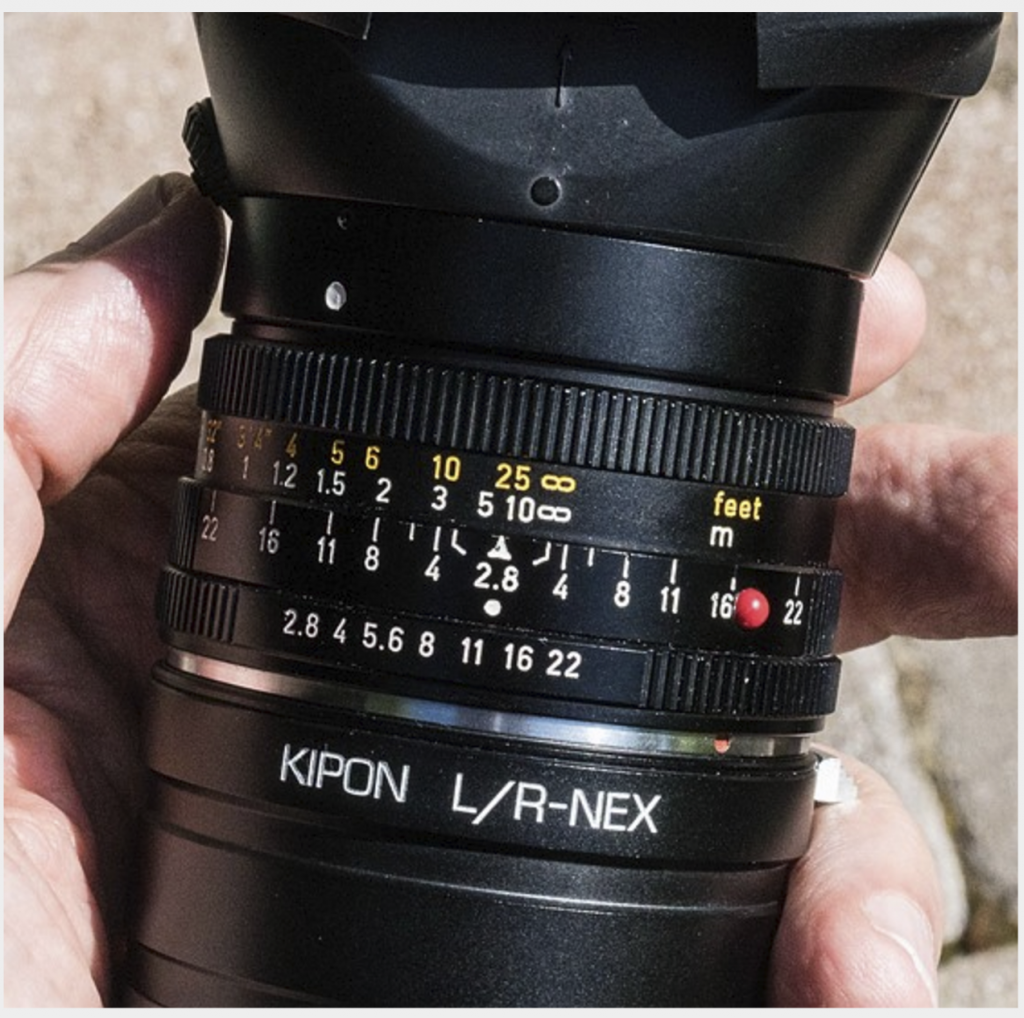This is a continuation of a report on new ways to look at depth of field. The series starts here:
No doubt you’re familiar with the depth of field (DOF) markings on your lenses. If you’ve got manual focus lenses, the markings are probably fairly detailed.
If you have a new autofocus lens, the lines are probably uselessly close together and perfunctory, something designed by engineers for people who they thought would be stupid to use them, sort of like the cupholders in a German sports car.
You probably also know about the hyperfocal distance. Pick a circle of confusion (CoC), pick an f-stop, consult a table or look at the DOF markings on the lens, and you can set the lens to a focus distance that will maximize the distance range over which objects are resolved on the sensor with CoCs less than or oqual to the one you picked.
You may or may not know that the CoC implied by the markings on your lens probably is about 30 um in diameter as measured on the sensor.
Some people recommend that landscape photographers routinely set the focus distance to the hyperfocal distance, and, by not suggesting otherwise, imply that the markings on the lens are a decent way to set the hyperfocal distance.
That, my friends, is a Really Bad Idea.
Here’s why:
The horizontal axis of the graph is subject distance in meters. It’s a log to the base 10 scale, so a third of the way between 1 and 10 is about 2, and two-thirds is about 5. The vertical axis is MTF50 measured in cycles per picture height. The simulated sensor is 42 MP, 14 bit, full frame Bayer CFA with no AA filter, like the sensor in the Sony a7RII. Fill factor is 100%. I turned off all sources of noise (photon, read, PRNU) — they don’t affect slanted edge measurements much anyway, since the technique is intended to calibrate out noise. Diffraction is computed at 450, 550, and 650 nm for the respective blue, green, and red raw color planes. The CFA is Adobe RGB, and the illuminant is D65.
I’m using a lens blur model that I originally created a couple of years ago to approximate the on-axis behavior of the Zeiss Otus 55/1.4. Now that I have improved my focusing accuracy with a motorized rail and my target with a razor blade edge, I now realize that my Otus model is actually somewhat worse than the lens itself, particularly at wide apertures. Nevertheless, it can serve as a stand-in for very good, if not great, 55mm lenses.
You can see that setting your lens to the hyperfocal distance with a circle of confusion of 30 um is a recipe for limiting distant sharpness to less that 600 cycles per picture height. 500 cy/ph is not very sharp at all.
You have been warned.


Jerry Fusselman says
Yes, Merklinger agrees that hyperfocal-focusing using your lens markings is a “Really Bad Idea”. He also suggests that using the markings for stopping down one or two stops offers surprisingly little help. But he was using CoC. I wonder if you agree and if that holds up using MTF50.
Jim says
I do agree. I find that three or four is more like it, if I’m looking for real sharpness. Given a particular camera, you can go back and forth between MTF50 and equivalent CoC (which is a broader concept than the CoC that Merklinger refers to, but related) using the techniques described here:
http://blog.kasson.com/?p=15167
Jim